Recycled-PET – PE-compounds 19-07-2022 - Arhive
Recycled-PET – PE-compounds
Crude Oil Prices Trend
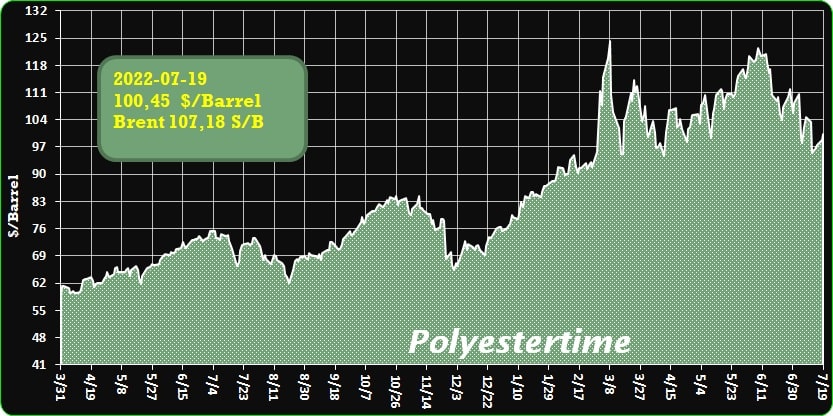
-BASF develops technology to remove pyrolysis oil contaminants
BASF has introduced products for the purification of complex pyrolysis oils from plastics waste – though also with potential applications in tire recycling, said the company.
The Gerrnan group’s PuriCycle catalysts and adsorbents selectively remove or convert contaminants in the oils that occur as secondary raw materials in chemical plastics recycling. The products, said BASF, enable closed-loop, downstream processing of plastics, helping recyclers to meet industry standards for the composition of pyrolysis oils.
This, stated the chemicals maker, allows “highly efficient” cleaning and processing of the process streams, as well as greater flexibility in chemical plastics recycling. After treatment, pyrolysis oils can be fed back in at the beginning of the value-chain for the production of polymers, said BASF.
The group went on to describe pyrolysis oil purification as “one of the most demanding challenges” in chemical plastics recycling. Impurities such as halogen, nitrogen, oxygen, and sulphur compounds, as well as reactive components such as dienes, can make downstream use more difficult, it explained
The chemical composition also significantly limits the possibilities for further processing of these product streams in the production of new materials, it added. Asked if the technology can be applied to rubber/tire pyrolysis, BASF informed ERJ that certain PuriCycle adsorbents ‘could be used in tire-based feeds.’
As per MRC, BASF and Sinopec are further expanding their joint Verbund site in Nanjing, China. It is manufactured by BASF-YPC Co., Ltd. (BASF-YPC), a 50:50 joint venture between the two companies. The capacities of several downstream chemical plants will be expanded for the growing Chinese market. This also includes the construction of a new tertiary butyl acrylate plant.
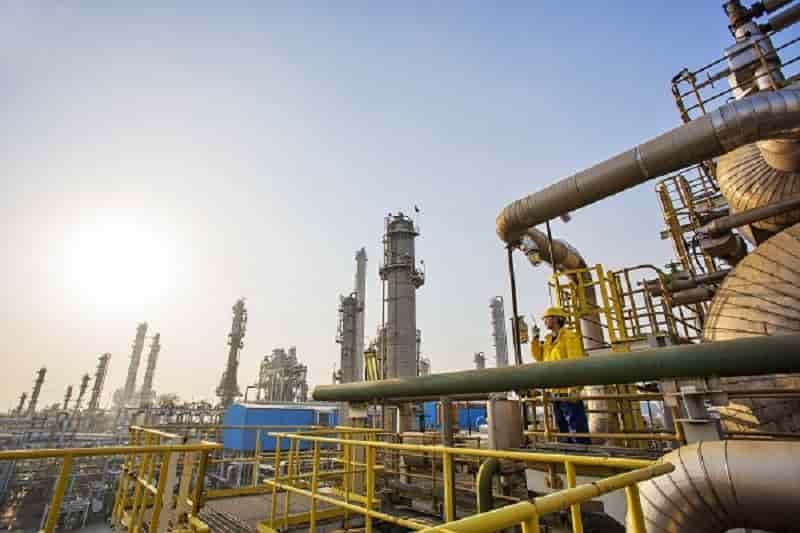
-Tessemae’s relies on bottle-to-bottle recycling process for its bottle range
Tessemae’s, a premier organic condiment and salad dressing US-company, announces bold new packaging for its array of products. The refreshed product line featuring an updated design and eye-catching artwork is available nationwide.
The design is a recyclable plastic bottle made from PET. Each product is involved in a bottle-to-bottle recycling process which enables a new bottle to be produced from an old one.
“Since our inception in 2009, Tessemae’s has always been a purpose driven company. Identifying sustainable solutions that increase renewability while maintaining quality is a natural course of evolution for us,” stated Greg Vetter, CEO of Tessemae’s. “Unlike a lot of companies, we contribute to the public interest simply because we believe in the importance of doing so. We’ve been doing that from day one with the launch of our Crop Circles campaign and are fully committed to continuing with that guiding philosophy going forward.”
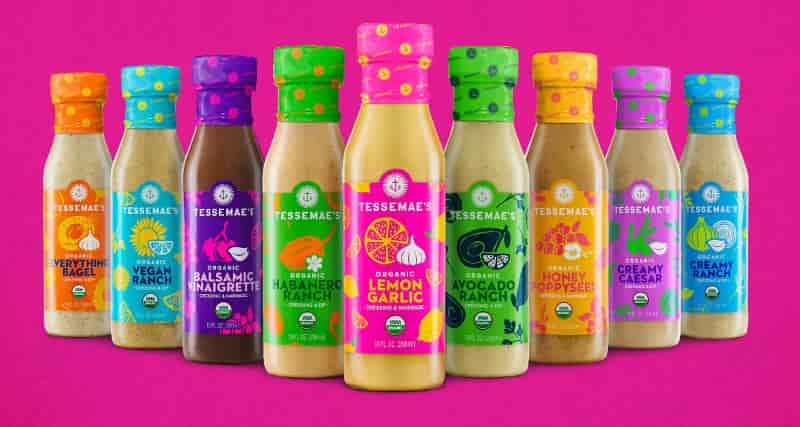
-Cirplus sounds warning over availability of European sorted plastic
The low availability of sorted plastic will negatively impact the operations of plastic recyclers in Europe, Cirplus is warning.
Christian Schiller, chief executive of Cirplus, the European digital marketplace for circular plastics, said the latest statistics from Plastics Recyclers Europe on the state of the European recyclables market shows a serious gap of 20 million tons, between the amount of waste generated and what is actually put on the market.
“Recyclable and recyclates must finally be traded as transparent commodity, to meet the ever-growing demand for quality recyclates world-wide.”
He said to achieve this, a digital system must be put in place that can navigate the complexities and fragmentation of global plastic waste markets.
“Waste managers should seize this opportunity and get ahead of the curve by digitalising offline processes, leading to reduced costs and potentially even turning waste streams into revenue streams.” Recycled-PET – PE-compounds
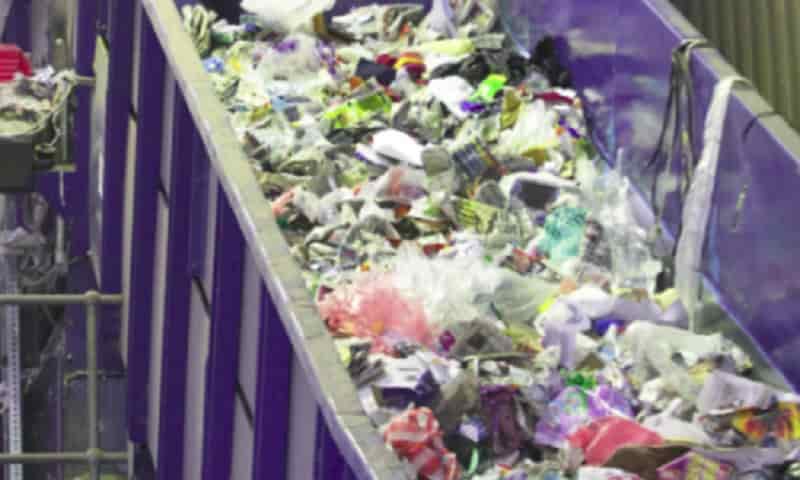
-Vietnam loses $3 bln a year not recycling plastic: UNDP
Vietnam “wastes” around $3 billion each year by not recycling plastic waste, a senior United Nations Development Program official said Friday at a conference on solid waste management.
Caitlin Wiesen, UNDP Resident Representative in the country, said Vietnam releases around 19,000 tons of plastic waste a day. In some sea regions, for every three parts of fish netted by fishing activities, there is one part of plastic waste that comes with them, she added. Recycled-PET – PE-compounds
To help Vietnam utilize solid waste as a potential resource, the Global Environment Facility and the Norwegian government will provide $2 million to launch a project supporting implementation of the national action plan on marine plastic litter in the context of a green post Covid-19 recovery project.
The project is expected to facilitate a more dynamic and inclusive economy while providing opportunities for long-term sustainable growth and generating new jobs.
It aims to collect up to 220 tons of plastic waste each year in supermarkets and create collection points in large neighborhoods, netting in 20-100 tons of recycled plastic waste a day.
Implemented over the next five years, the project will first be trialed in central Vietnam’s Binh Dinh Province for around $1.2 million. The UNDP will help create material recovery facilities able to process 2-4 tons of plastic waste a day.
The project would also pilot a waste management model in the fisheries sector, in which fishermen will be encouraged to bring back their waste to shore after every journey. Such efforts are expected to prevent around five tons of plastic from entering the sea per month and the goal is to prevent around 1,000 tons of waste from entering the sea per year, Wiesen said. Recycled-PET – PE-compounds
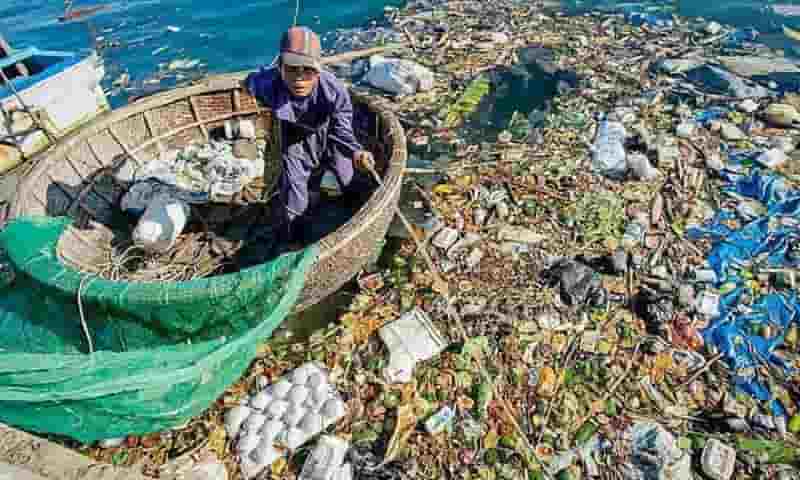
-Expansion of three-layer polyamide capacity
Increasing design, contrast and colour freedom for carpet tile manufacturers.
At the end of 2021, BIG Yarns, based in Comines, France, was selected as one of the recipients of the French government’s Relance programme.
The programme is focused on accelerating economic growth by supporting companies committed to creating employment, the strengthening of skills through employment and training, innovation and competitiveness. Recycled-PET – PE-compounds
The support has allowed BIG Yarns to increase the production capacity of its best-in-class one-step, three-layer polyamide yarn technology by 20% through the installation of new production lines at the Comines site. These feature new yarn technology that increases design, contrast and colour freedom for carpet tile manufacturers, but also provides increased flexibility allowing customers to respond faster to new developments on the contract market.
Specific energy consumption has also been optimised, contributing to energy savings at the plant and making new products possible.
In addition to strengthening and renewing its production infrastructure and technology, BIG Yarns also focused on developing new products that contribute to the sustainability efforts of its customers. The company will now offer a completely new portfolio of PET yarns to its customers in the automotive industry. Recycled-PET – PE-compounds
This strategic reinforcement project will ensure that BIG Yarns can sustainably hold its own in a very challenging and rapidly changing market, affected by high raw material and energy prices, strong competition and fluctuating demand that affects the entire sector.
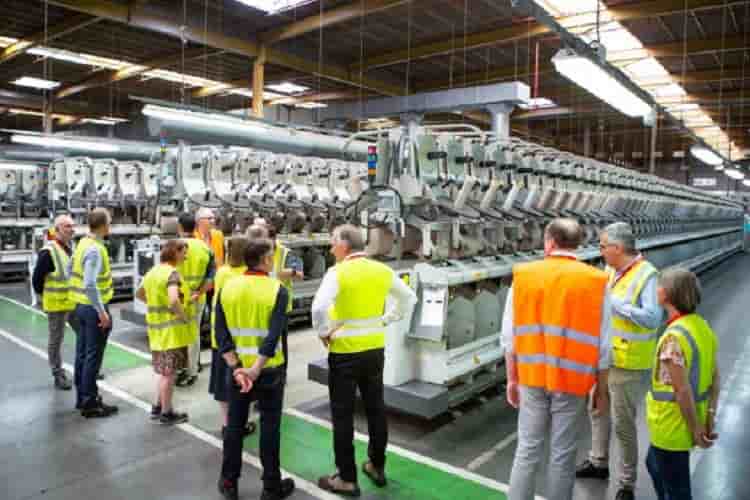
Dow announced its post-consumer recycled-rich resins, REVOLOOP™, are the first polyethylene (PE) compounds to be certified in accordance with the Standard UNE-EN 15343 for plastics recycling traceability and recycled content.
The certification has been granted by AENOR, a global company and the Spanish leader in conformity assessment and extends to all three grades offered by Dow in Europe.
REVOLOOP™ grades are part of Dow’s plastics circularity portfolio and incorporate a high percentage of post-consumer recycled (PCR) material. Recycled-PET – PE-compounds
The single-pellet solution enables a simpler PCR process integration, meeting the needs of converters, brand owners and sustainable packaging designers, and can be used in a broad range of applications. Providing access to quality, consistent waste streams, and increasing reliability in the waste value chain, the REVOLOOP™ family of PCR-rich resins expand Dow’s sustainable offerings portfolio to help advance a closed loop system for plastic waste.
“REVOLOOP™ represents a tangible step towards realizing our vision for a circular plastics economy,” said Peter Sandkuehler, European Sustainability Director for P&SP. “It exemplifies Dow’s efforts around the world to enable mechanical recycling and the incorporation of PCR in a variety of technologically demanding applications. Such progress will bring all the players in the value chain further in their sustainability journey.”
Certified sustainable production
The UNE-EN 15343 is the European Standard that specifies the procedures needed for the traceability of recycled plastics and covers two schemes: the traceability and characterization in the plastic recycling process, and the minimum content of post-consumer recycled plastic used in the processing of a plastic product.
This certification was awarded following a full independent, external audit to ensure that the control of incoming plastics waste, the traceability in the production processes of recycled material and the percentage of post-consumer recycled material included in the certified products, Dow XZ98612.00 (30%), Dow XZ98615.00 and Dow XZ89169.00 (70%), complies with the requirements set out in UNE-EN 15343 standard.
Therefore, AENOR has verified that the manufacture of Dow’s polyethylene compounds contains up to 70% of post-consumer recycled products, which have either fulfilled their intended purpose or can no longer be used for the purpose for which they were conceived.
Recycled-PET – PE-compounds
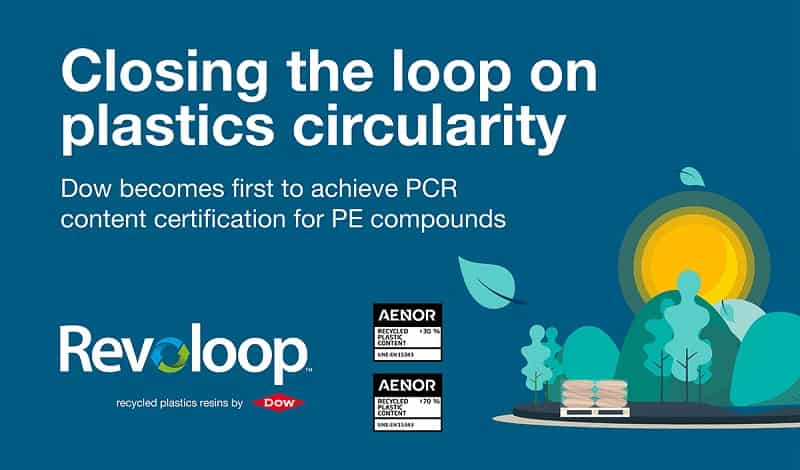
-The Use of Recycled PET for the Synthesis of New Mechanically Improved PVP Composite Nanofibers
Polyethylene terephthalate (PET) waste has become a major challenge for the conservation of the environment due to difficult degradation. For this reason, it is important to develop new
recycling strategies for reusing this waste. In this work, the electrospinning technique was used to synthesize composite nanofibers of polyvinylpyrrolidone (PVP), recycling PET (RPET) that was. Recycled-PET – PE-compounds
obtained from the chemical recycling of postconsumer PET with glycolysis and styrene (ST) as a crosslinking agent. The polymer solutions were analyzed by viscosity and frequency sweeping,
while the composite nanofibers were characterized by scanning electron microscopy (SEM), Fourier transform infrared spectroscopy (FTIR), thermogravimetric analysis/differential scanning calorimetry
(TGA/DSC), and nanoindentation to compare their properties. The PVP nanofibers presented anaverage diameter of 257 nm; the RPET/PVP and RPET/PVP/ST composite nanofibers had average diameters of 361 nm and 394 nm, respectively; and the modulus of elasticity and hardness of the RPET/PVP/ST composite nanofibers were 29 and 20 times larger, respectively, than those of the
PVP nanofibers. With the synthesis of these composite nanofibers, a new approach to PET recycling is presented.
- Introduction
The growing production of polyethylene terephthalate (PET) bottles has become a major problem in recent years. In 2014, the world consumption of PET bottles was
approximately 42 Mt, while for 2020, it was estimated to be approximately 73 Mt, with an annual increase of 6.2% [1–3]. Despite the wide use of PET, a very small amount
has been recycled due to the low value of the material and the economic infeasibility of its recycling [4]. Certainly, there are many benefits of recycling these materials, such as
reductions in greenhouse gases, water/air pollution, energy consumption, and conservation of natural resources [5,6]. Mechanical and chemical methods are the two main ways to recycle PET bottle waste. Recycled-PET – PE-compounds
In mechanical methods, PET bottle waste is crushed into very fine scraps, which are subsequently heated, melted, and remodeled into new products [7]. The chemical recycling of PET bottle waste consists of depolymerization to obtain the initial monomers by hydrolysis, methanolysis, aminolysis, or glycolysis [8,9]. Glycolysis has been established to be the most cost-effective method for chemical recycling of PET bottle waste because it requires low amounts of reactants, as well as lower temperatures and pressures than other methods [10,11].
The obtained products are monomers and oligomers that can successfully be used as precursors in the production of recycled PET (RPET) [12]. The reinforcement of materials such as cementitious matrices [13], coatings [14], biomedicine, and tissue engineering [15] are some examples of applications of RPET. However, its applications are very limited due to the low value of its mechanical properties. For this reason, it is of vital importance to improve its mechanical performance to increase the range of possible applications. One way to improve the mechanical properties is by crosslinking the RPET molecules through an agent such as ST [16]. Recycled-PET – PE-compounds
ST has been used as a polymer crosslinking agent because it is cheap and improves polymer properties such as stiffness, mechanical strength, and thermal stability [17]. Another way to improve the mechanical properties of RPET is to chemically bond RPET and a virgin polymer to produce a composite material.
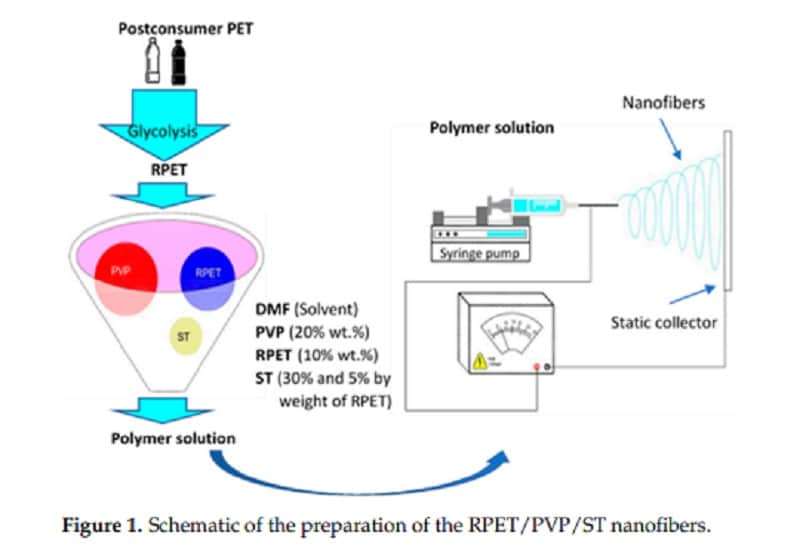
-Drowning in plastic? Biodegradable materials could be a lifesaver.
Japanese companies are pushing eco-friendly compounds, but it might not be enough
It’s official: In March, the United Nations Environmental Assembly endorsed a global pact on the life cycle of plastic. It has been declared a seismic shift in the battle against marine pollution, but what will happen to the oceans before those potential positive effects come?
Japan’s coasts and seas are awash with plastic waste. More PET bottles and plastic cups and take-out containers were found on the country’s beaches than any other litter except cigarette butts, according to a 2020 study by Statista. And that’s not set to change soon: Japan continues to produce 9.4 million tons of plastic waste annually according to the Environmental Investigation Agency, a London-based nongovernmental organization.
In deeper waters, the Great Pacific Garbage Patch of floating plastic is an estimated 1.6 million square kilometers, and the amount of plastic waste entering the ocean annually could rise to 29 million tons by 2040 without action, according to a 2020 Pew report. This phenomenon has contributed to the 35,000 tons of microplastics already in the oceans globally, as noted by the Scottish nonprofit Fidra.
March saw Japan provisionally agree to sign the United Nations Environmental Assembly’s global pact to eliminate plastic pollution by addressing the life cycle of plastic, (the agreement is due for completion in 2024). In April, Japan enacted its own attempt to address the plastic issue from creation to disposal. The Plastic Resource Circulation Act aims to reduce the use of petroleum-based plastics and promote recycling, contributing to the Osaka Blue Vision set out at the 2019 G20 meeting, which is “to reduce additional pollution by marine plastic litter to zero by 2050.”
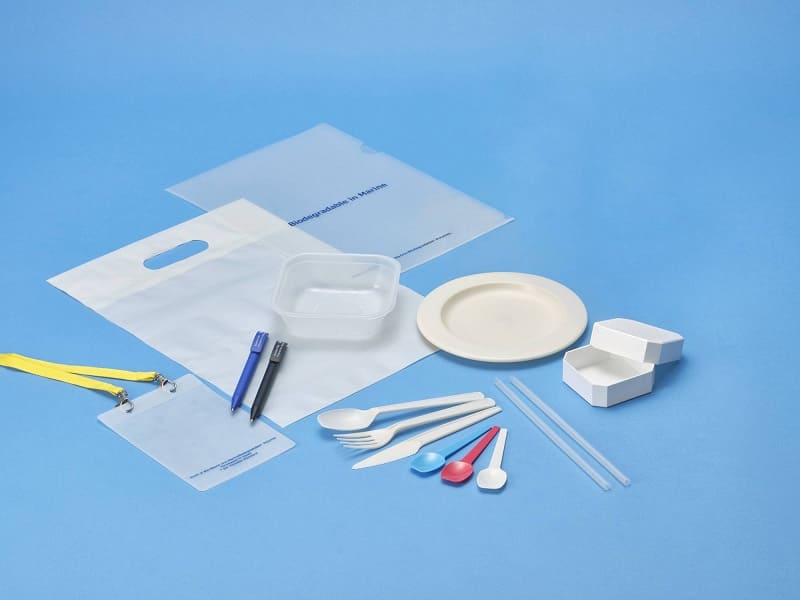
Recycled-PET – PE-compounds
